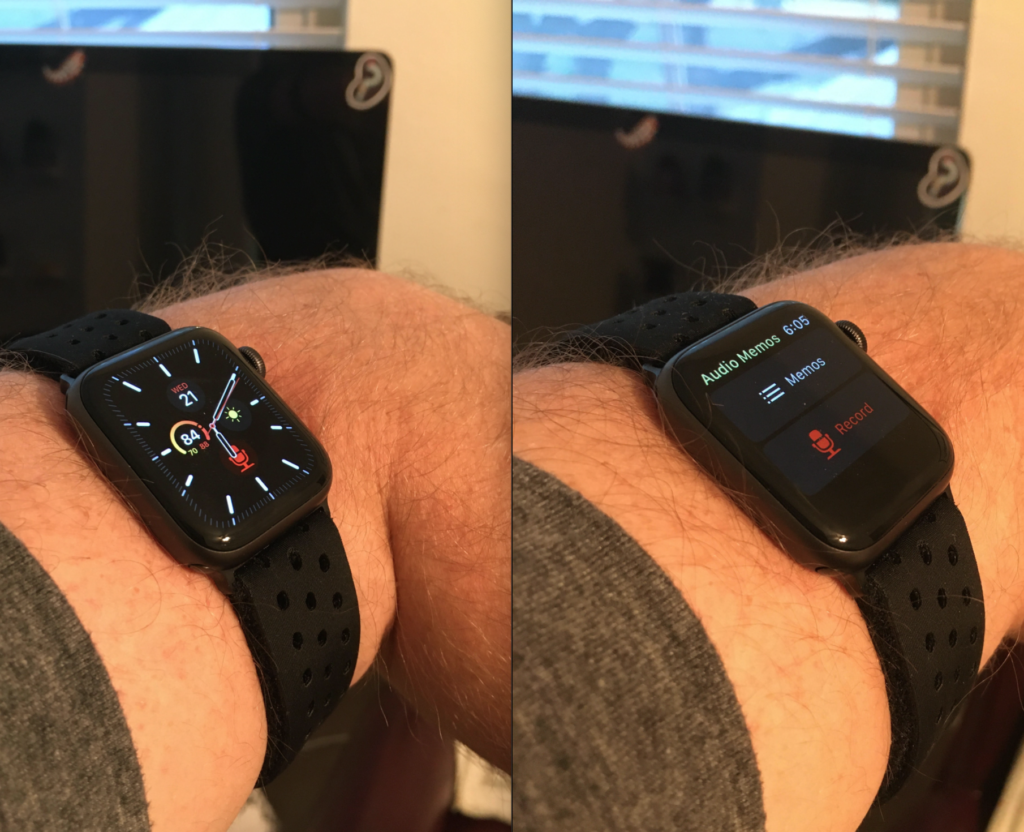I’ve gotten feedback that this comes off as an ad for Apple or something. I’m oftentimes pretty critical of Apple, it’s just I feel like a hobby of mine has been significantly improved, and sometimes adding the right gadget can do that.
For years I’ve relied on jogging as a primary means of creating quiet space to think.
I consider any time without a phone as sacred. For me, the main ones are: showering, driving, pre-sleep time (having a spouse has thankfully cut down my in-bed phone gazing habit), and jogging. You may have other examples such as yoga, meditation, swimming, strolling, bird watching, reading a book… etc.
Paul Graham has written about the value of separating oneself from distracting screens, as well as ideating on walks. And Hacker News has circulated the notion that the mere presence of a smartphone can limit one’s cognitive capacity.
Because smartphones are so strongly tied to media consumption, I think my creative brain is conditioned to power down when I’m looking at one. So when I leave home on a run, I don’t take the iPhone with me. (This does create some safety issues, which I talk about later.)
One principle to successful 🏃♂️ brainstorming on jogs I’ve found is offloading ideas soon after they’re formed (otherwise I spend the rest of the jog worried I’ll forget them). This means note-taking is essential to a fun run. Without a smartphone companion, for many years my go-to was the sweat-proof Aqua Notes, which could follow me into the post-jog shower. 👍
The Apple Watch has a decent microphone and voice memo app support, unlike most other fitness/smart-watches. This potentially makes it an excellent note-taking device for joggers.
Isn’t adding another device to the mix just creating another distraction? I don’t activate the cellular option and I have notifications turned off, so it really can’t be a content consumption device on a jog. Even Paul Graham’s essay on reducing distraction included having a second, limited-and-purposeful computer.
The device has to be comfortable to wear or else it’s just as distracting as carrying an iPhone.
And comfort was an issue for me with the Apple Watch Series 4 (which I returned), but while trying the Apple Watch SE, I came to a realization: using an armband instead of a wristband was a gamechanger for ergonomics. For starters, the above-elbow area is experiencing less motion, so the tug of the watch is noticeably less after each step. The band’s grip is also spread out over a larger area, so it can be made tighter than on the wrist without being too painful. This means the Watch is securely fastened and not drawing attention to itself.
In practice you’re usually two taps away from taking a note (one tap on the watchface shortcut and another on the “Record” button).

Once you’ve made it home, the notes automatically sync back to your iPhone, which is pretty seamless.
Overall, using voice memos on the Watch has been far less cumbersome than taking physical notes (resulting in faster-paced runs) and led to far more (and more detailed) memos.
Other thoughts on the Watch:
Safety
Having a run-in with a (prime biting-age) Rottweiler on a recent jog convinced me of the value of being able to call emergency services in a pinch. Is jogging a high-risk activity? It depends. If it’s done enough days out of the year, the area under the risk curve is significant. I think in most regions (if you have the cellular model) you’ll be able to reach emergency services without necessarily having to pay $10/month to a carrier. That was a nice surprise.
Speaking of cost: the SE is sold at a palatable price point ($279). The oxygen sensor and ECG of the S6 don’t improve the device as a jogging companion, so I’d rather pocket the difference ($120).
Taking pulse readings while wearing on the arm seems to still be pretty accurate (within a few BPM of this finger-worn device).
So, if you like brainstorming on jogs, I recommend the Apple Watch SE.